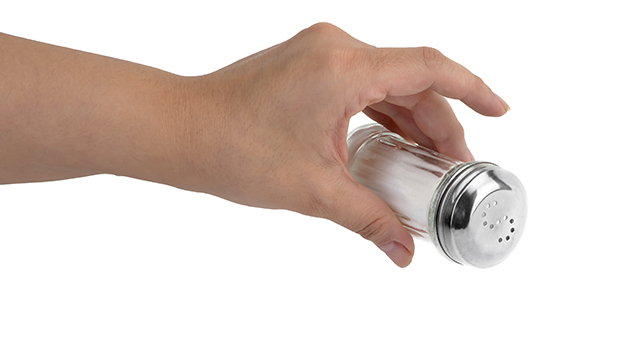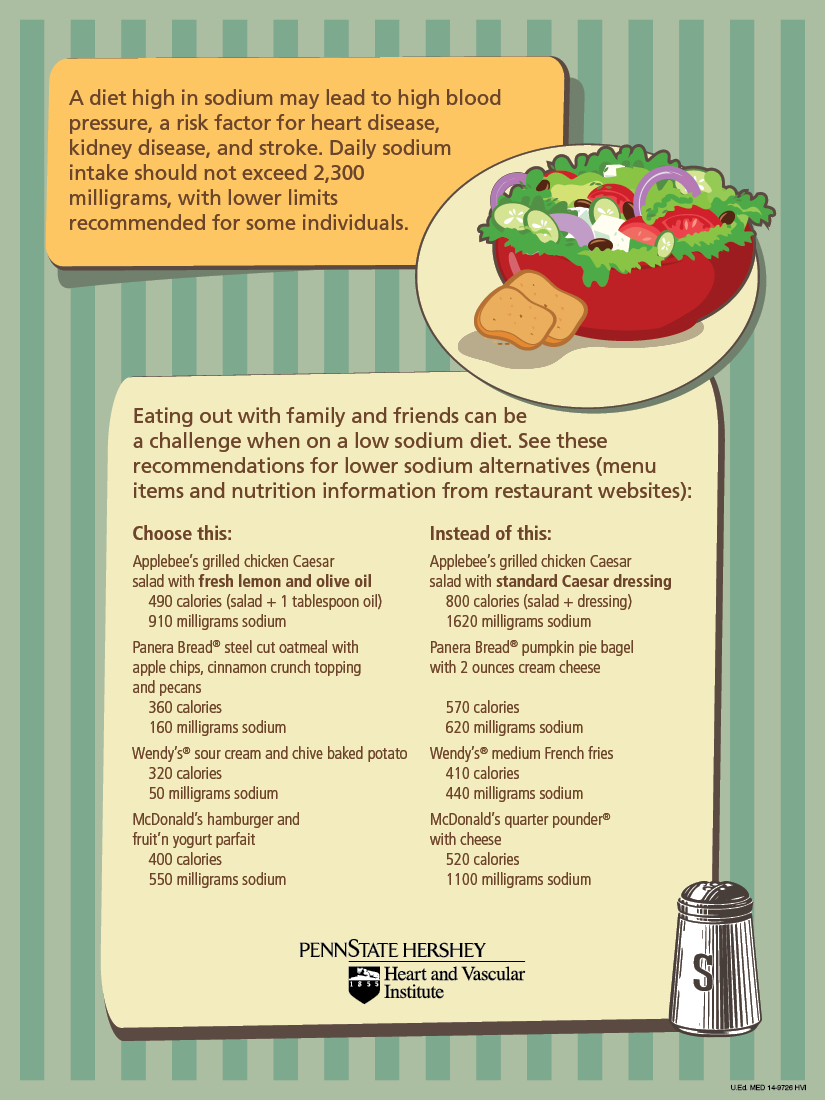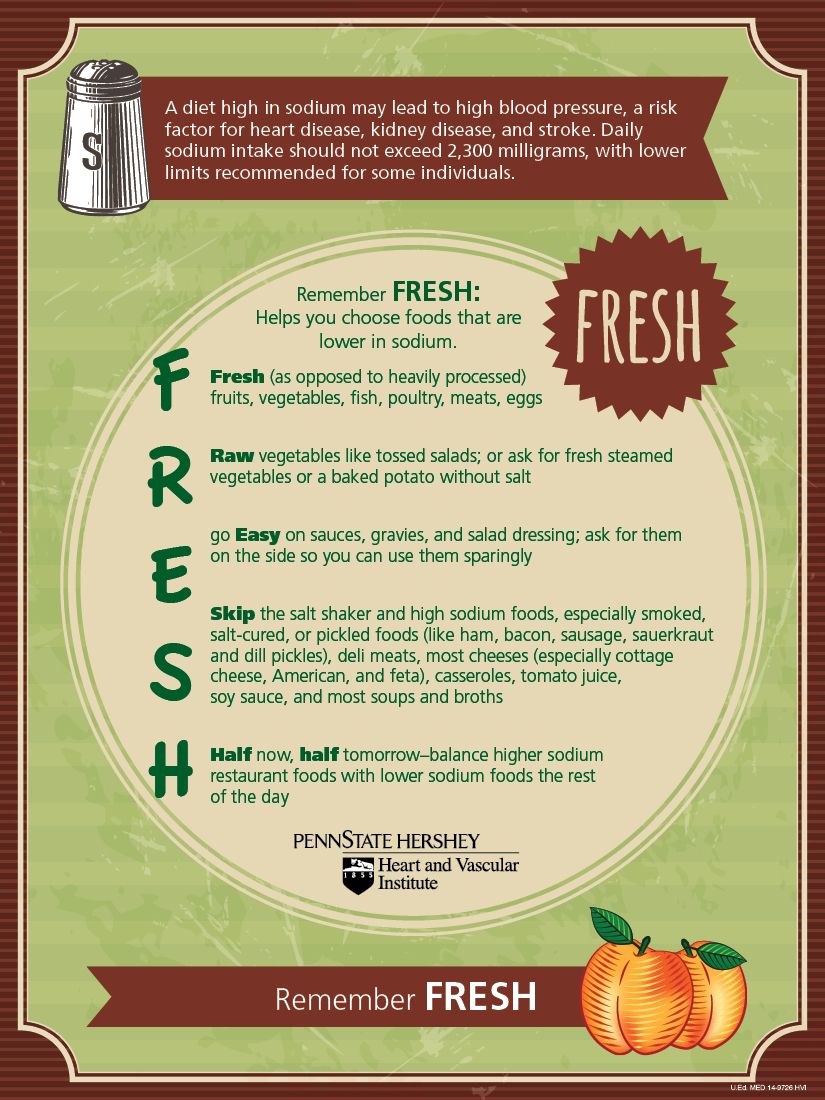The Medical Minute: How to limit sodium intake while eating out for the holidays

Whether at a restaurant or at a relative's house, eating out during the holidays can be difficult on a diet, especially when it comes to sodium intake.
Sodium is an important nutrient for human health: The body uses it to control blood pressure and blood volume. Sodium is also needed for muscles and nerves to work properly. Many foods naturally contain sodium and many others have salt added to improve flavor, so it's easy today to get too much. Too much sodium can lead to health problems like high blood pressure, which contributes to serious problems like heart disease and stroke.
Jan Kristensen, M.S., R.D., L.D.N., from the Cardiac Rehabilitation and Wellness Center at Penn State Milton S. Hershey Medical Center, shares strategies for enjoying the festivities without the stress of too much sodium.
If going to a restaurant, visit its website and consult an online menu or nutritional information. Ask questions, such as whether meals are made to order, by calling ahead.
Additional online resources can provide general information about many popular foods, but these aren't necessarily specific to your host's recipes.
“Going to a relative's house might be a little trickier than eating out,” Kristensen said, but it can't hurt to ask the host some questions.
If familiar with what the host typically serves, visit gomeals.com to download an app that provides nutritional information for favorite foods. Visit eatright.org to learn what foods are low in sodium.
“Educate yourself ahead of time and be more aware of what are the foods you need to stay away from and what are the foods that are naturally low in sodium,” she said.
Eat less processed foods.
Food naturally low in sodium is less processed. Think fresh from the field—fresh fruits and vegetables as they come from nature are very low in sodium. The more fresh foods are emphasized, the better. Dietary guidelines for Americans recommend filling half of the plate with fruits and vegetables.
Fresh meats also have a smaller amount of sodium than processed meats like sausage and bacon. If cooking, order a fresh turkey, not the one that is injected with salt solution as a preservative. Turkey is a better choice than ham.
Avoid high sodium foods.
The highest sources of sodium in an American diet are yeast breads, breaded chicken products and pizza.
During the holidays, mashed potatoes and stuffing can often be culprits along with cheeses and crackers.
When the salt can't be controlled by cooking yourself, consider sweet potatoes, which are less likely to be salted, and swiss cheese with less sodium.
Be wary of desserts. Grain-based desserts like pies, pastries and cakes are the biggest sources of sodium.
Keep in mind when watching calories that diet, low-calorie, low-fat products often contain double the sodium of the regular variety.
Limit portions. Take a bite or take a small portion to satisfy seasonal dish cravings.
Do things to slow down eating, like focusing on the conversation or putting down your fork or spoon between bites.
To avoid temptation, don’t stand too close to the buffet and sit down to eat.
When visiting a restaurant, split an entrée. Use smaller plates at home or with family.
Prepare ahead of time.
In addition to doing research, offer to bring something to help your host with preparation. Take herbs or salt-free seasoning to a restaurant and ask for foods that are very plainly prepared.
Log or track sodium to know what you've eaten and to make it easier to make decisions throughout the day. It helps you get away from mindless eating and is good for calorie counting as well.
Mentally plan ahead by deciding what the temptations are and what will be allowed to be eaten. Stick with a taste of those special foods that are eaten once a year to avoid that feeling of depravation.
“Feel like you're in control, not deprived,” Kristensen said.
The Medical Minute is a weekly health news feature brought to you by Penn State Milton S. Hershey Medical Center. Articles feature the expertise of Penn State Hershey faculty physicians and staff, and are designed to offer timely, relevant health information of interest to a broad audience.
If you're having trouble accessing this content, or would like it in another format, please email Penn State Health Marketing & Communications.


